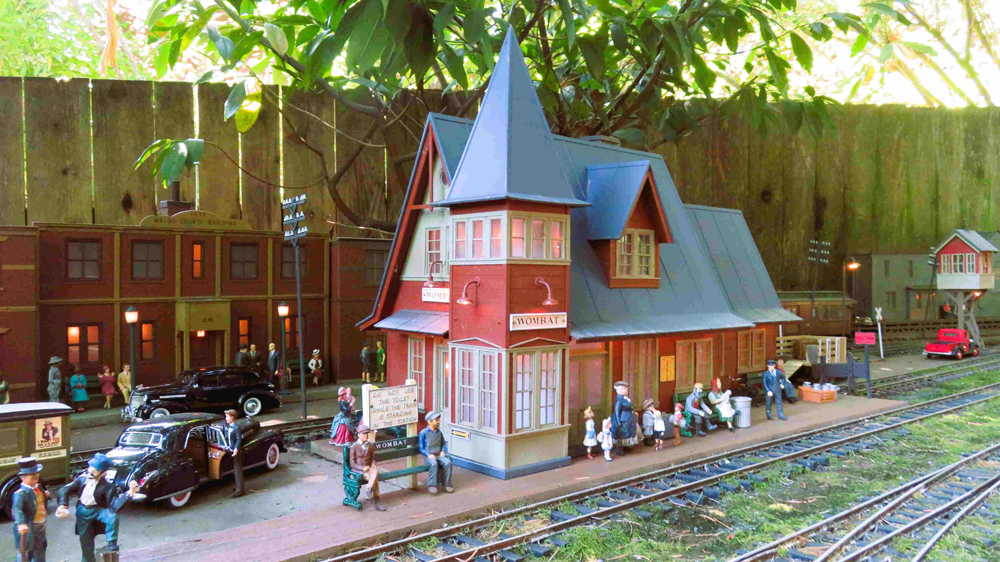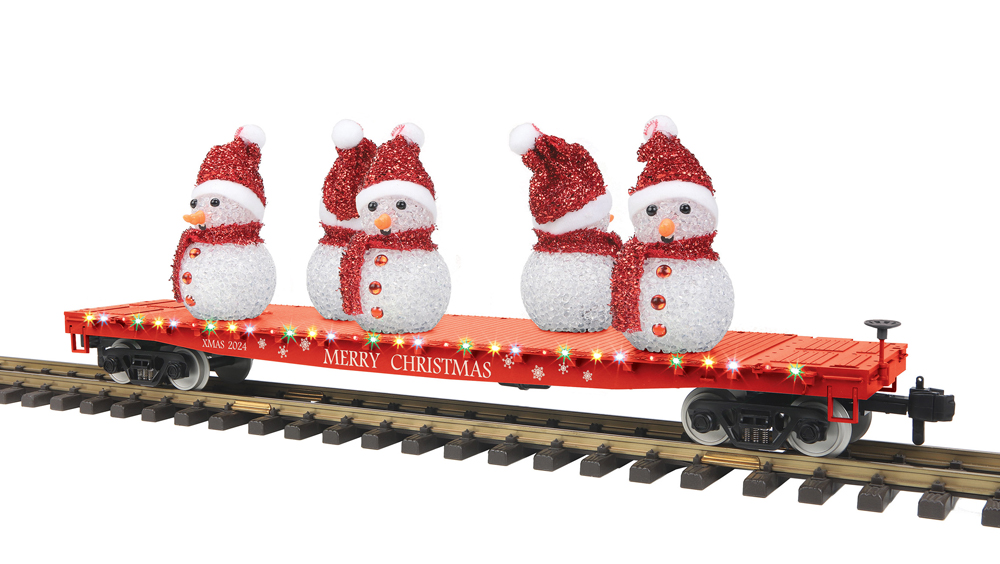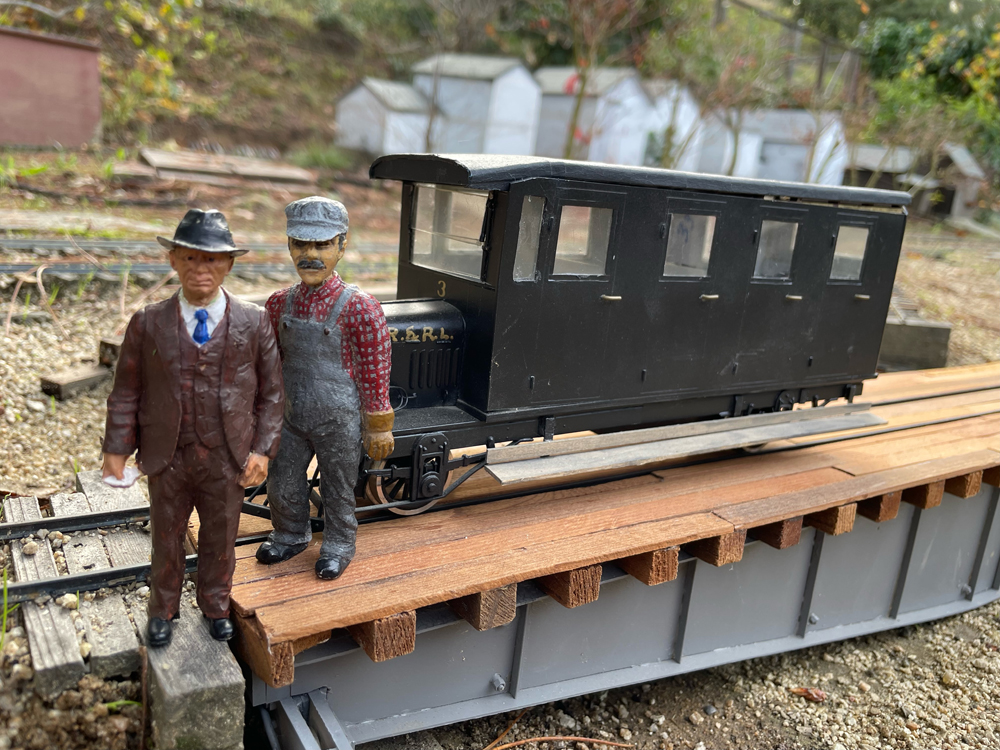How did you get started in the hobby?
I was born into railroading. My mother was pregnant with me while she was working as a freight clerk for the Western Maryland Railway. When I was a bit less than a year old, my mother returned to work and the wife of the railroad’s chief freight agent became my babysitter.
We moved to a farm that fronted on the railroad’s mainline when I was five years old. This was during the transition from steam to diesel. In the summer months, my sister and I often went to work with our mother when no babysitter was available. We spent the day at various stations, as my mother was a traveling agent and worked vacation and sick leave for other agents and the extra list as needed.
At age 19 I got hired as a freight car inspector for the Western Maryland at Lincoln Yard, York, Pa. I didn’t like being a car inspector. It was dangerous work, and I didn’t like working alone deep in the car yards. I went to college to become a geologist. But the interest in trains remained, and I practiced model railroading in various scales: S, HO, back to S, and then to large scale.
How did I get started in the hobby? When I was about 12 years old I told my parents I wanted to have a year-round place to run trains, not just a Christmas layout around the tree. My parents agreed I could do that in the basement of our farmhouse, with two provisions. If I wanted to be truly into model railroading, the trains would run on two-rail track, not that three-rail stuff. Secondly, like the real railroad, the trains would start at one point and go to another. No going around in circles. They bought me some American Flyer S gauge trains and I built a long skinny layout along one side of the basement with reverse loops at each end. I stuck with S gauge until around 1988, which is when I started in large scale. Every one of my layouts over the years have been point to point layouts.
What was your first large scale locomotive?
I’m not certain, as I started by buying another person’s large scale collection with multiple engines.
What’s your favorite part of the hobby?
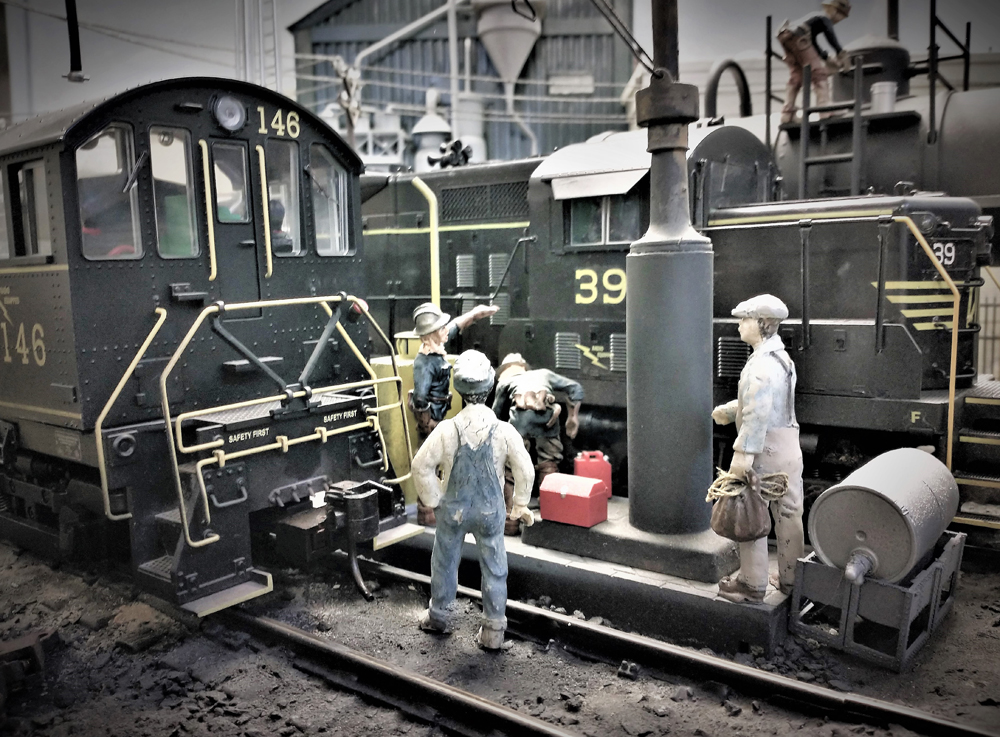
My favorite part of the hobby has evolved over the past 35 years. In the beginning it was building layouts. I built three successive layouts, then took those down and built my current layout. I got into constructing buildings. I like making big industrial structures. My largest one is 14 feet long. The tallest building is a bit over four feet. That was followed by painting and lettering rolling stock. In recent years, I have taken on building railway equipment. Thus far I have completed six powered units, everything from small maintenance-type units to full-size diesels.
What’s your least favorite part?
The thing I least like is the fall cleaning of leaves and debris. Since my layout is both indoors and outdoors, it’s nice to have one area for year-round use. Our winter weather has been arriving later each year, and I can operate outdoors until nearly Christmas. The railroad is fully functional for nine months.
What has been your biggest modeling success?
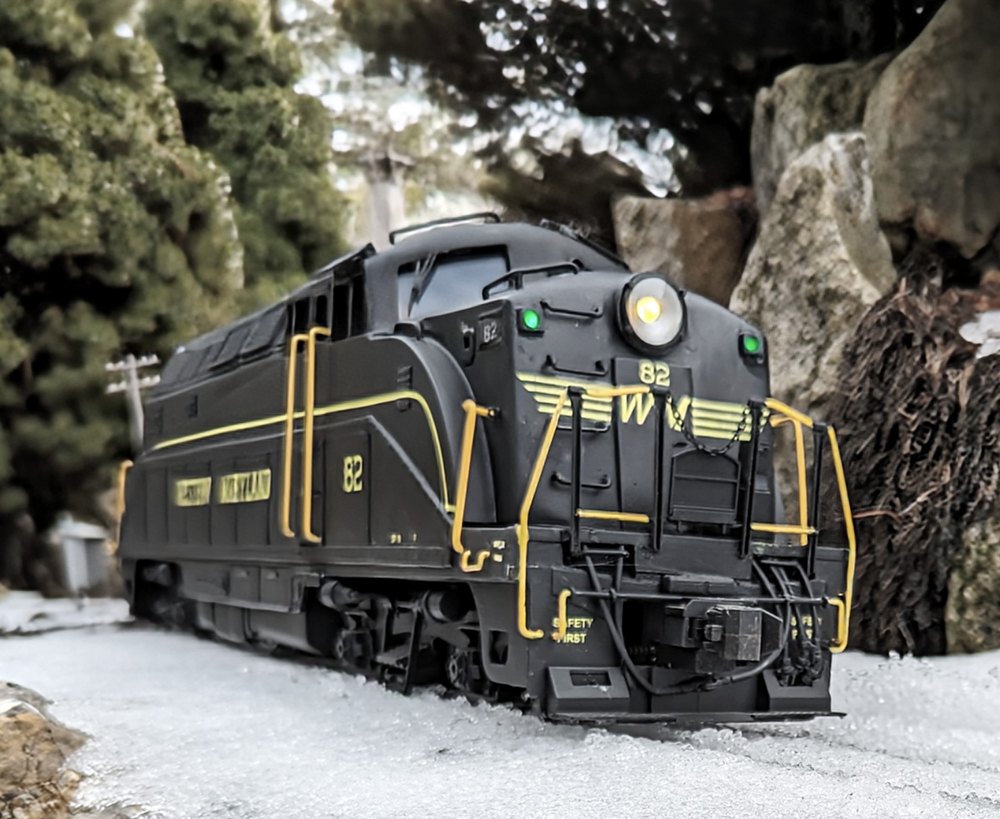
My biggest modeling success by far was building a Western Maryland Railway BL2 diesel and powered slug unit. That project took about a year and a half.
What was your biggest modeling mistake?
My biggest design mistake was using too small of radius for certain track sections of my layout.
What advice would you give to a new hobbyist?
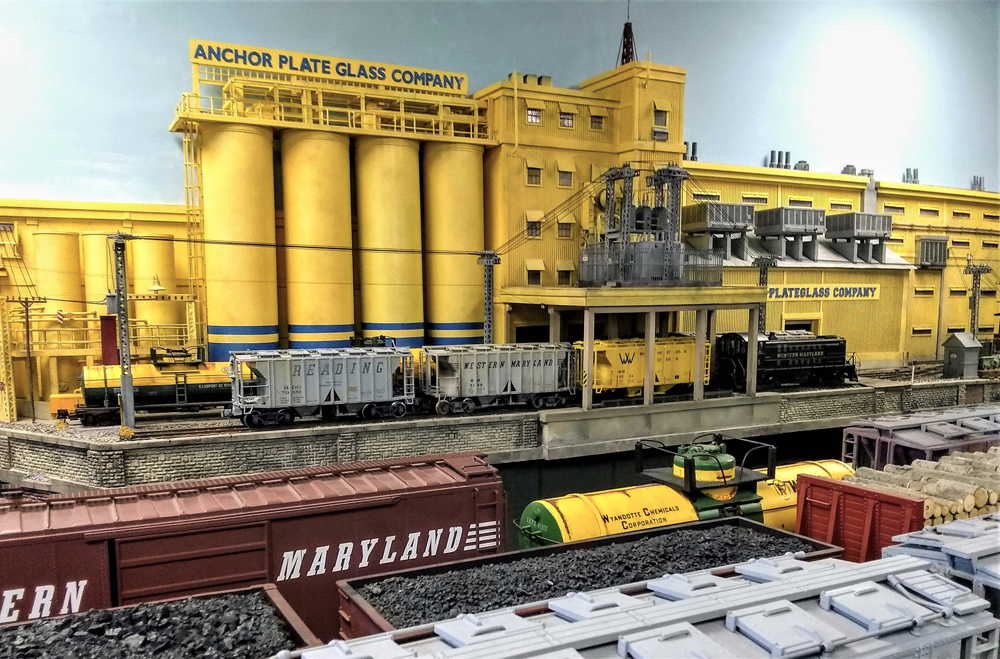
Several subjects fall into the category of best advice. Number one is get the track up off the ground. Ideally have no trackwork lower than 30 inches from the ground. Your knees will thank you; your back will thank you. The trains are much easier to work with at that height. It’s much more pleasant to view your layout and operate equipment when it’s not at your toes.
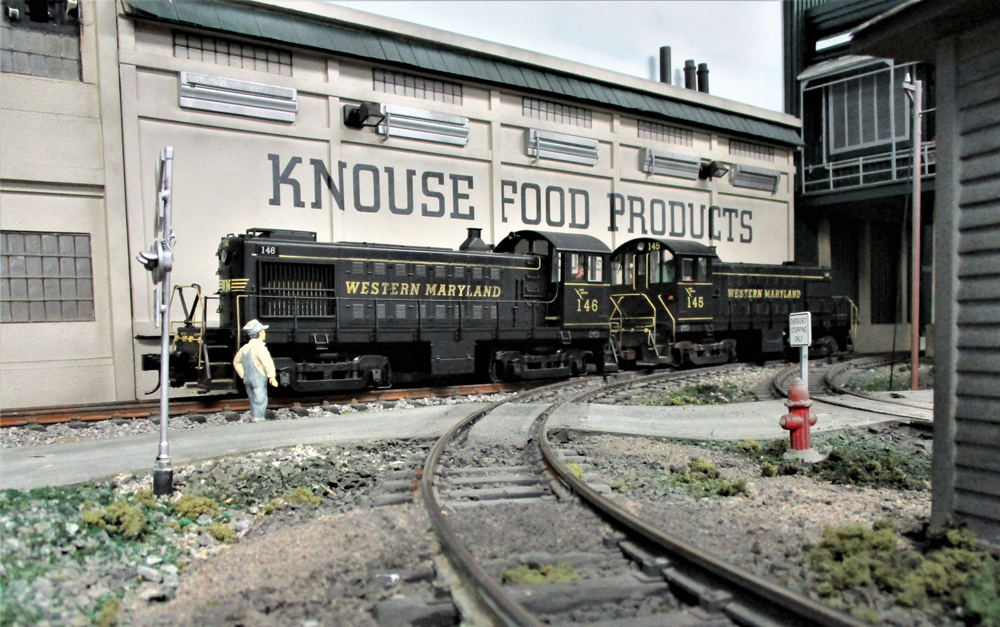
Secondly, eliminate track power. I started with track power and slowly evolved to battery power. This greatly reduced maintenance issues and hours spent cleaning track.
My final piece of advice is to share the operation of your garden railroad with others. Each year I have four operating sessions. Sometimes as many as 16 people participate on any given day. We operate as a real railroad does with job assignments, dispatching over two-way radios, waybills and switch lists, and proper signaling. We put in a seven-hour day with a group lunch break and some social time. Our operators come from all over. It’s not uncommon for individuals from three or four states to be in attendance. Best of all, we have a good time.
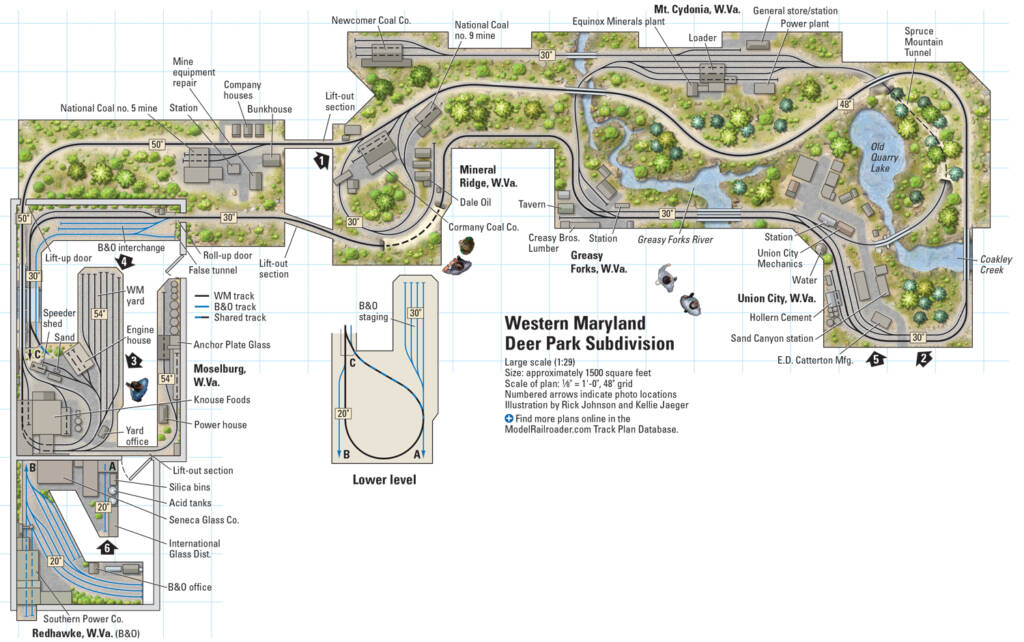
Read more about Steve’s large scale Western Maryland Deer Park Subdivision layout in Great Model Railroads 2021, available in the Kalmbach Hobby Store.
Learn more
Learn more about operations on a garden railroad: https://www.trains.com/grw/how-to/projects/operations-on-the-garden-railroad/
Operator positions on the SJR&P: https://www.trains.com/grw/how-to/projects/operator-positions-on-the-sjrp/






